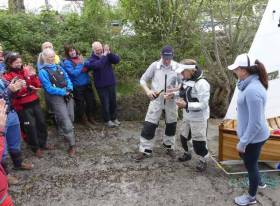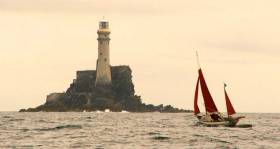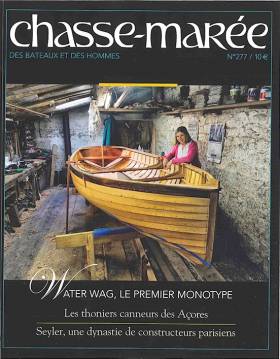Displaying items by tag: Cathy MacAleavey
Cathy MacAleavey Steers 'Mariposa' to Victory at Water Wag Women at the Helm Regatta Race
After two postponements due to weather, the Water Wag dinghy Women at the Helm Regatta race took place at Dun Laoghaire Harbour on Wednesday evening, June 5th, in strong, testing conditions.
As Afloat reported earlier, 1988 Olympian Cathy MacAleavey's Mariposa, number 45, was the clear winner on the double-header night, sailed as part of the AIB DBSC series, a feat celebrated at a special prizegiving in the Royal St George Yacht Club immediately after racing.
 National Yacht Club Olympian Cathy MacAleavey at the helm of Mariposa, number 45, was the winner of the Water Wag dinghy Women at the Helm Regatta race at Dun Laoghaire Harbour Photo:Brendan Briscoe
National Yacht Club Olympian Cathy MacAleavey at the helm of Mariposa, number 45, was the winner of the Water Wag dinghy Women at the Helm Regatta race at Dun Laoghaire Harbour Photo:Brendan Briscoe
Badger Sailed by Ann-Marie Cox was second, and Judy O’Beirne's Shindilla was third.
Olympic Silver Medalist Annalise Murphy was on hand last Saturday to help parents Con Murphy and Cathy MacAleavey launch the new family dinghy, a traditional clinker–built Water Wag dinghy, a class that celebrates its 130th season this year.
The champagne corks were popped on the shores of Lough Ree as the travelling Wag fleet welcomed the new addition. Mariposa, Number 45.
Mary Kennedy from RTE's Nationwide TV programme sailed the first race with Cathy. Kennedy helmed in the light winds (even though she has never sailed before) and Mariposa actually led most of the way to the Wineport Lodge hotel finish but just got pipped at the line. The race and a piece on Cathy's new Wag wil be screened on Nationwide on Friday, 5th May. The new dinghy, that Cathy built herself, has already featured on the cover of influential French maritime heritage magazine, Chasse–Maree.
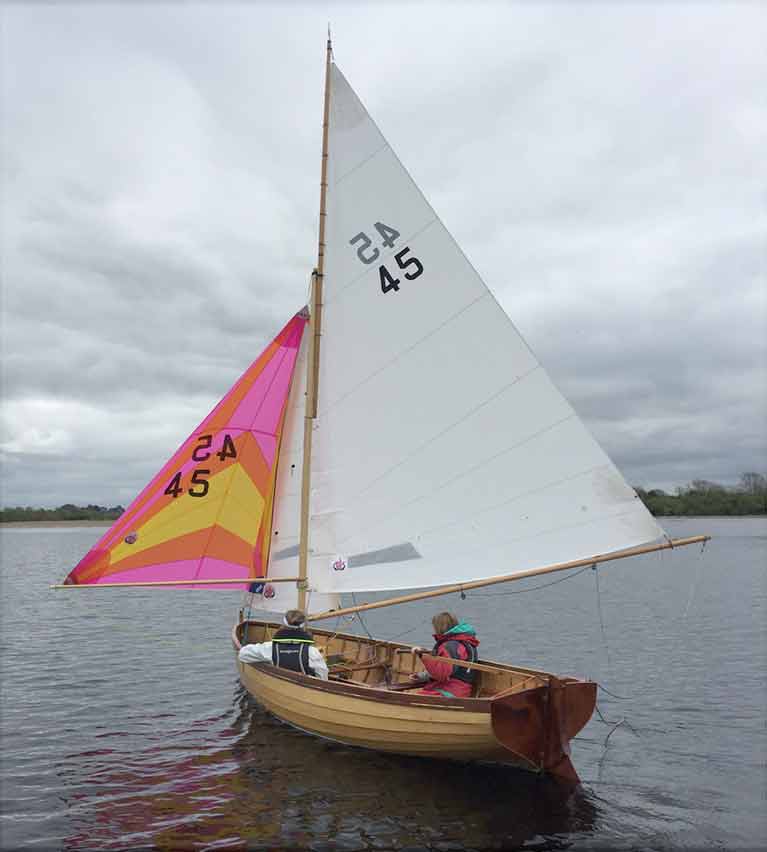 RTE's Mary Kennedy takes the helm of the new Water Wag for an item on Nationwide to be aired next Friday, May 5
RTE's Mary Kennedy takes the helm of the new Water Wag for an item on Nationwide to be aired next Friday, May 5
The Wags were holding a training sesssion at the freshwater venue with coaching by the UK's Mark Rhodes. The foiling Moths were also sailing but unfortunately there was too little wind for them.
The new boat is only the latest of new arrivals to the fleet with number 46, Madamoiselle, launching in 2015 at the Royal Irish Yacht Club.
The class is the oldest one design in the world and can still boast to be onf of the most successful, with regular turnouts of 20 boats and more for Wednesday night racing in Dun Laoghaire harbour.
Last year, a 110 –year–old model, Pansy, was the winner of the Royal Irish YC regatta.
Dun Laoghaire Bicentenary Sailing Regatta Takes on Interesting New Acts
With some visionary thinking by Cathy MacAleavey in her capacity as chief of the sub-committee organising the Classics, Traditional and Old Gaffers section of the Volvo Dun Laoghaire Regatta & Harbour Bicentenary Festival from June 6th to 9th, the scope of the event is going to become even more varied and certainly more colourful. As W M Nixon has discovered, she has been spreading the net wide:
“We’ve never been asked to take part in a regatta before. Never. So of course we’ll be there. And I personally am looking forward to it very much indeed.”
The speaker is Jack O’Keeffe of Cork, one of the main men in the Irish Drascombe Association, and also the overall association’s organizer of Rallies. While his members with their distinctive and extensive selection of tanned-sailed little boats are a familiar sight in Ireland and elsewhere as they stage their various rallies and other events, despite the well-known distinctive blue-green hull colour with which they were introduced being known throughout the country, nobody seems to have thought of them before as worthy participants as a class of their own. Not even as part of a menagerie class in a local regatta, let alone as playing a significant role in major events. But Cathy did her usual bit of lateral thinking, and the result is a whole new fleet for the Dun Laoghaire festivities.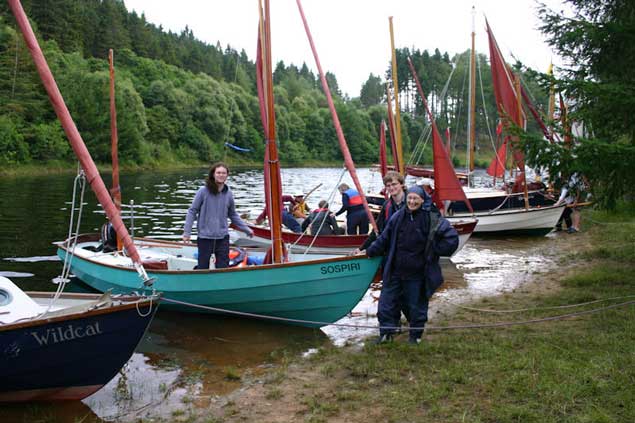 Traditional perceptions remember the Drascombes as all having that distinctive blue-green colour, but they’ve been multi-hued for years.
Traditional perceptions remember the Drascombes as all having that distinctive blue-green colour, but they’ve been multi-hued for years.
In Dun Laoghaire, the very fact that the Drascombes within their different types are broadly One-Design should see them encouraged, for in the home of One Design racing, it is only relative speed which is significant. Broadly speaking, every Drascombe will be sailing at much the same fairly leisurely speed, and they’ll all be manoeuvring in sync with that admirable Drascombe dignity. If that’s not a formula for good one-design racing, then I don’t know what is.
Yet while they may not break world sailing speed records, Drascombes certainly do sail – think of the Ogden brothers who sailed round Ireland in their Drascombe Lugger in some decidedly rugged conditions in 2015. Others, believe it or not, have crossed oceans. And on top of that, if they have managed to wend their way into the head of some peaceful creek at the end of day’s sailing, the lack of shore facilities is no problem, as most Drascombes provide rudimentary accommodation, quite commodious in some cases.
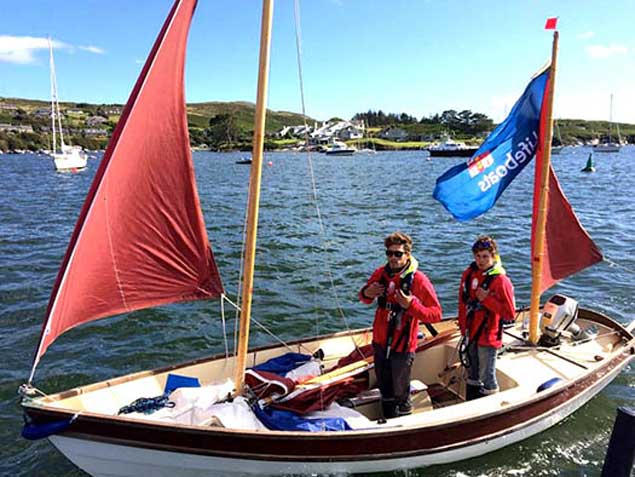 "We’ve done it!” The Ogden brothers sail their Drascombe back into Baltimore at the completion of their round Ireland cruise.By a happy coincidence, 2017 is a special year, as it more or less marks the Golden Jubilee of the time Devon boat-builder John Watkinson started designing characterful seaworthy little boats which reflected the rigs of earlier times. It was in 1968 that he took the final 1967-built prototype to the London Boat Show and sold her within 20 minutes of opening, coming home with orders for 19 sister-ships to a concept whose popularity is proven by the fact of there now being 5,000 currently afloat.
"We’ve done it!” The Ogden brothers sail their Drascombe back into Baltimore at the completion of their round Ireland cruise.By a happy coincidence, 2017 is a special year, as it more or less marks the Golden Jubilee of the time Devon boat-builder John Watkinson started designing characterful seaworthy little boats which reflected the rigs of earlier times. It was in 1968 that he took the final 1967-built prototype to the London Boat Show and sold her within 20 minutes of opening, coming home with orders for 19 sister-ships to a concept whose popularity is proven by the fact of there now being 5,000 currently afloat.
The Golden Jubilee celebrations have already got under way with a party at the recent London Boat Show, but thanks to the Drascombe Association’s tradition of having the annual conference and dinner in the home town of the current overall chairman, the big party is going to be in Belfast City Hall on the weekend of March 25th to 26th, as the Drascombe Association’s Chairman of for 2017 is John Stanage of Belfast.
 A remarkable setting for the Drascombe Association’s Golden Jubilee celebration at the end of March 2017 – Belfast City Hall, completed in 1906, was an exuberant expression of a rapidly-growing city at the height of its industrial power.
A remarkable setting for the Drascombe Association’s Golden Jubilee celebration at the end of March 2017 – Belfast City Hall, completed in 1906, was an exuberant expression of a rapidly-growing city at the height of its industrial power.
Heaven only knows what Drascombe sailors from elsewhere will make of Ireland’s built environment if they attend the events both in Belfast in March, and in Dublin Bay in July. Belfast City Hall was such an exuberant expression of the city’s rocketing prosperity when it was completed in 1906 that its gloriously over-the-top Baroque Revival style was promptly copied by major civic buildings elsewhere. As for the rather more austere Kingstown Harbour - which will probably briefly revert to its imperial name during the Bicentenary Regatta - not only is the harbour a massively impressive structure on such a scale that it now seems a natural part of the bay, but its waterfront has a trio of yacht club buildings which, while the they don’t begin to match Belfast City Hall’s opulence, are quite something by comparison with your average sailing club.
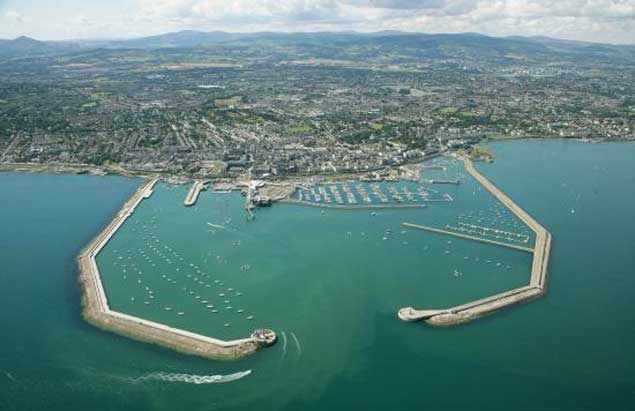 For smaller Drascombes, Dun Laoghaire Harbour is a complete cruising ground within itself
For smaller Drascombes, Dun Laoghaire Harbour is a complete cruising ground within itself
One of the reasons the Drascombes came up on the Dun Laoghaire radar is because the Sub-Committee were particularly impressed by the vibrant trailer-sailer section which is now to be found in the Old Gaffers Assocation, a section in which Drascombes play a signficant part.
It’s of interest that the OGA themselves have lately been paying closer attention to encouraging designs for smaller gaffers of good performance potential, and at the AGM in London last month, outgoing OGA President Sean Walsh of Dublin was able to unveil preliminary drawings of a concept by that versatile designer Andrew Wolstenholme of a 13ft 6ins “modern mini-gaffer” which the OGA wishes to encourage, with ease of amateur building a priority.
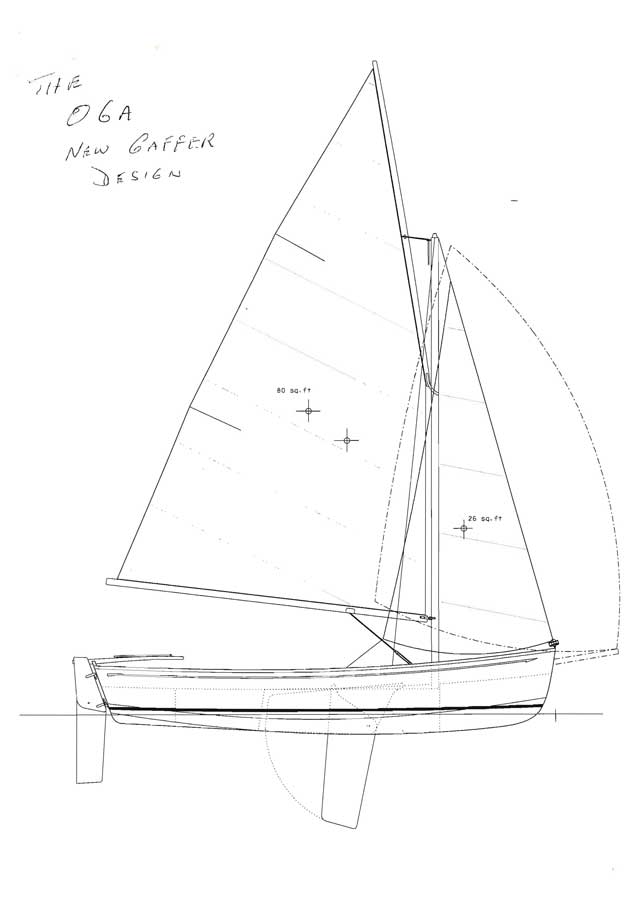 Concept drawing from Andrew Wolstenholme for the new 13ft 6ins “performance mini-gaffer” to be sponsored by the Old Gaffers Association
Concept drawing from Andrew Wolstenholme for the new 13ft 6ins “performance mini-gaffer” to be sponsored by the Old Gaffers Association
Equally Sean – who himself sails the 28ft Heard Falmouth Cutter Tir na nOg, a “plastic fantastic” – wished to record his own and the OGA’s appreciation of the work over the years of another boat designer from southwest England, and this is Roger Dongray, a house architect who many years ago found himself starting to design the little plastic gaffers which went on to become the Cornish range of Shrimpers, Crabbers and whatever, every one of them a characterful little boat which gives much pleasure and the extra sport of handling gaff rig to owners who have neither the resources nor skills to maintain an ageing wooden boat.
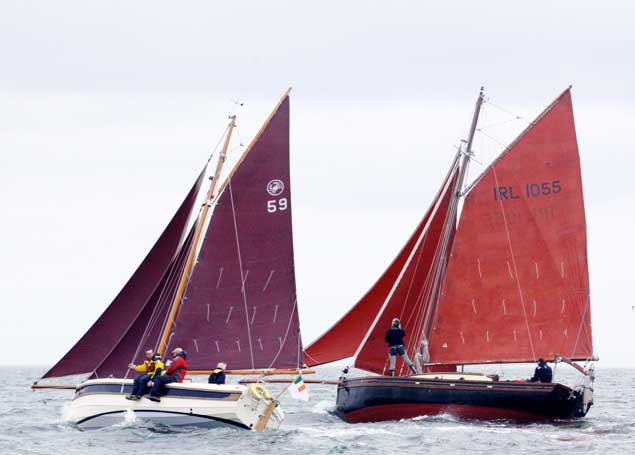 Dublin Bay OGA President Denis Aylmer’s Cornish Crabber Mona (left) and outgoing OGA President Sean Walsh’s Heard 28 Tir na nOg Photo: Dave Owens
Dublin Bay OGA President Denis Aylmer’s Cornish Crabber Mona (left) and outgoing OGA President Sean Walsh’s Heard 28 Tir na nOg Photo: Dave Owens
So Sean’s final duty before standing down, to be succeeded as President by Alistair Randall, was a formal presentation to acknowledge Roger Dongray’s special work in making gaffers interesting to modern-minded owners, and his skill in creating a recognisable style in a range of fibreglas-built gaff-rigged boats which are an adornment to any port or anchorage.
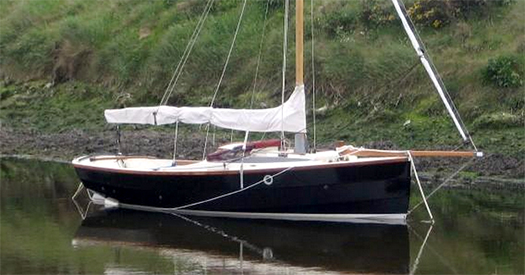 The versatile Cornish Shrimper is one of Roger Dongray’s most popular designs.
The versatile Cornish Shrimper is one of Roger Dongray’s most popular designs.
In an era when the advent of foils means that we are seeing mono-hulls which have the potential to move at meaningless speeds, the sheer pleasure of coaxing the best performance out of a comfortable and characterful gaffer, aboard which your young family feels comfortable and secure, is something to be treasured, and it intrigued me to hear the other day that Olivier Prouveur, the Sailing Manager at the National YC and highly experienced in many kinds of craft, has bought himself a Cornish Shrimper as he reckons a boat like this provides very well for Dun Laoghaire sailing requirements – and yes, he does hope to race her for the Kingstown Cup in July.
Another area of possible participation where Cathy MacAaleavey has been casting her net is the three-masted Bantry Boats, but a problem she has discovered is that several are short of crews. One particular case is the one which was built in a community project at Banagaher on the Shannon, but unfortunately the key man in all this has moved on elsewhere, and they’ve a personnel problem.
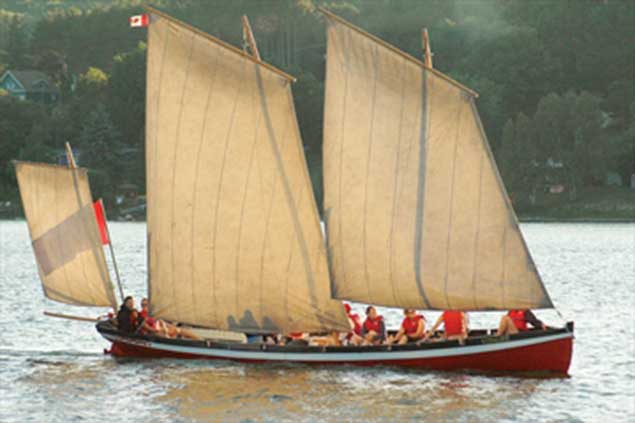 Bantry Boats need a lot of crew
Bantry Boats need a lot of crew
This in turn has opened up the possibility of the thriving coastal rowing clubs being a source of crewmen for the Bantry boats, for thanks to the enthusiastic support of the legendary Ger Ryan of St Michael’s Rowing Club underneath the arches beside Dun Laoghaire’s inner harbour, the outer harbour is going to be packed out with skiff racing crews from near and far on Sunday July 9th.
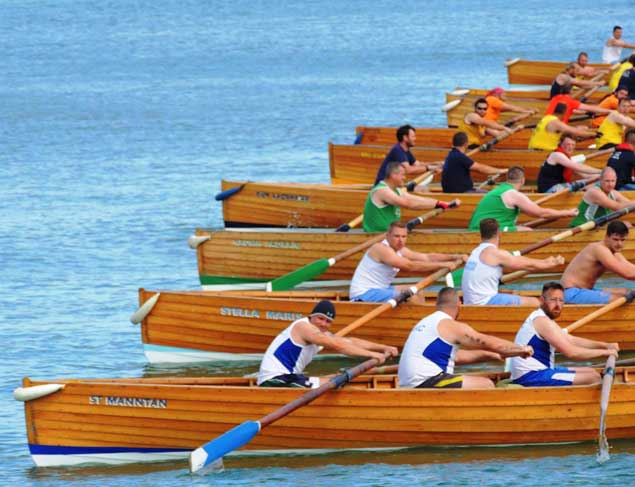 Manpower….the East Coast Rowing craft are an ancient style of boat going back to the era of the Dublin Bay hobblersFrom that comes the idea of an invitation being cast in the direction of the rowing skiffs of Strangford Lough. They’re much lighter and smaller boats than the traditional hefty East Coast craft which date back to the hobblers’ service boats of the 18th and 19th century. In Strangford Lough by contrast they used a highly-regarded Iain Ougthtred easy-build design, and a league developed as noted harbour pubs around the lough organized boat-building classes to provide an Oughtred skiff apiece. There are now nine boats which regularly turn out to race together, and it is of course thirsty work, which was probably the thinking all along.
Manpower….the East Coast Rowing craft are an ancient style of boat going back to the era of the Dublin Bay hobblersFrom that comes the idea of an invitation being cast in the direction of the rowing skiffs of Strangford Lough. They’re much lighter and smaller boats than the traditional hefty East Coast craft which date back to the hobblers’ service boats of the 18th and 19th century. In Strangford Lough by contrast they used a highly-regarded Iain Ougthtred easy-build design, and a league developed as noted harbour pubs around the lough organized boat-building classes to provide an Oughtred skiff apiece. There are now nine boats which regularly turn out to race together, and it is of course thirsty work, which was probably the thinking all along.
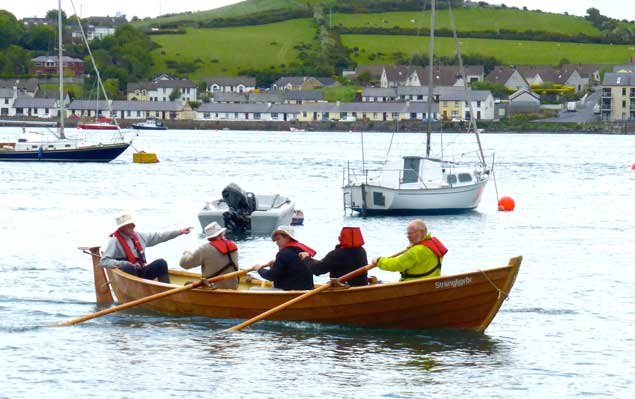 The Iain Oughtred-designed skiffs have established a league in Strangford Lough Photo W M Nixon
The Iain Oughtred-designed skiffs have established a league in Strangford Lough Photo W M Nixon
Whether or not they come to Dun Laoghaire in July is another matter altogether, interesting and all as it would be. But either way, we can be sure that the hugely varied fleet which is now shaping up for the Classics, Old Gaffers and Traditional Division of the Volvo Dun Laoghaire Bicentenary Regatta 2017 will find that whole-hearted participation is indeed very thirsty work.
Leading French maritime heritage publication Chasse–Marée features Dublin Water Wag sailor and builder Cathy MacAleavey on its lastest front cover. In a full length feature article, the magazine features the history of the world's first dinghy ('le premier monotype') that has its origins at Shankill beach in Co. Dublin from 1886. Olympian MacAleavey, who recently exhibited a new build of the 13–foot craft at the RDS is photographed on the front cover at Jimmy Furey's workshop on the river Shannon at Roscomon.
Built in Mountplunkett, Roscommon over the past 18 months by Jimmy Furey and Cathy Mac Aleavey, Wag No. 45 has been named Mariposa (Spanish for butterfly) and was launched during the annual Waterwag Club Shannon regatta held at Lecarrow on Blackbrink Bay, Lough Ree on September last. This season, Mariposa joined the growing number of Waterwags being raced in Dun Laoghaire.
The over 100–year–old class is one of the most active dinghy classes racing in Dun Laoghaire, regularly attracting 20 and 30–boat fleets. Last season, another brand new boat, No.46 was launched and sailed at Dun Laoghaire.
Read more by WM Nixon: Ireland's Invisible Boat Builders




























